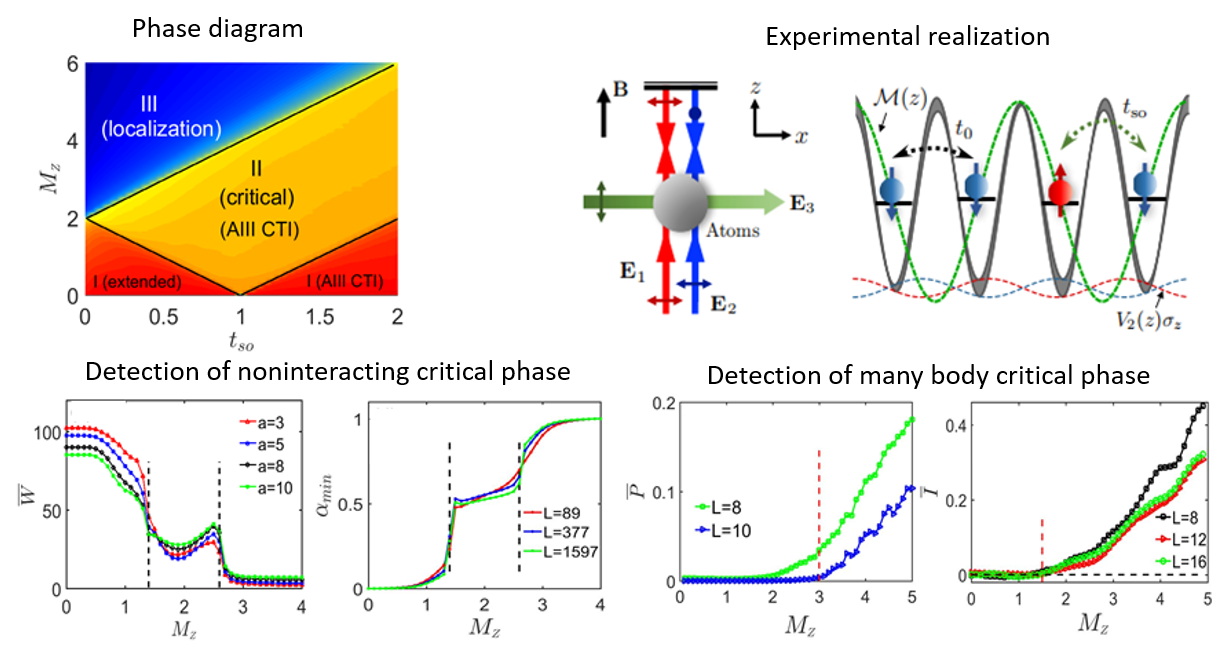Dapeng Yu’s group make progress on the realization and detection of non-ergodic critical phases
Ge WAN 2020-11-13
Recently, Dapeng Yu’s group from the Institute for Quantum Science and Engineering, Southern University of Science and Technology and Xiong-Jun Liu’s group from the International Center for Quantum Materials, Peking University, have proposed to realize and detect the non-ergodic critical phases, a fundamental phase, in optical Raman lattices for the first time. This work paves the way to observe the single-particle and many body critical phases. Their study was published in a top international journal, Physical Review Letters, entitled “Realization and detection of a non-ergodic critical phase in an optical Raman lattice.”

Anderson localization is a fundamental quantum phenomenon in condensed matter physics, showing the disorder-induced localization of electronic wave-functions. The recent cold atom experiments have observed Anderson localization in the one-dimensional (1D) lattice with the controlled disorder and incommensurate quasiperiodic optical lattice [Nature 453, 891 (2008)]. The 1D disordered or incommensurate quantum systems can keep to be localized when interactions are considered, leading to the many-body localization (MBL), which has been studied widely and detected in cold atom experiment [Science 349, 842 (2015)]. Between the localization and ergodic extended phases, a third type of fundamental phases, called critical phases, can exist without or with interactions, with the latter case leading to the many-body critical phase which has been first proposed in our other work [arXiv:1910.12080]. Critical phases are important in understanding the transitions from localization or MBL to extended phases, and exhibit various interesting features, including the critical spectral statistics, multifractal behavior of wave-functions, and dynamical evolutions, which are different from the extended and localized phases. However, the critical phases have not been realized and detected in experiment. On one hand, there only exist the critical point in most of the models without critical region. Only few theoretical models may host critical phases. However, these models are not realistic in the experiment. Further, the experimental diagnostic for detecting the critical phases is lacking.
This research team creatively proposed a one-dimensional spin-orbit coupled model with incommensurate Zeeman potential. This proposal is of high feasibility and can be immediately achieved in the current experiments. This model has the critical phase in a broad phase diagram region separating from the extended and localized phases. In the noninteracting regime, they showed that the critical phase can be detected by measuring the mean square displacement of the wave packet after a fixed evolution time in real space or measuring the momentum distributions. With interactions, they proposed two observables, i.e., the return probability of the initial state and the density imbalance, to distinguish the many body critical phase from both the ergodic and MBL phases. Finally, this work provided the detail that how the proposed model is realized based on the current cold atom experiment. This work opens a broad avenue with high experimental feasibility to explore critical phases in the absence and presence of interaction in ultracold atoms.
In this work, Yucheng Wang, a postdoc at the Institute for Quantum Science and Engineering and the Department of Physics, Southern University of Science and Technology, is the first author. Long Zhang, a postdoc at International Center for Quantum Materials, Peking University, is the co-first author. Xiong-Jun Liu, a professor at the International Center for Quantum Materials, is the corresponding author.
This work was supported by the National Nature Science Foundation of China, the Science and Technology Ministry, the Department of Science and Technology of Guangdong province, Shenzhen Science and technology innovation Commission, and Southern University of Science and Technology.
Article link:https://link.aps.org/doi/10.1103/PhysRevLett.125.073204




